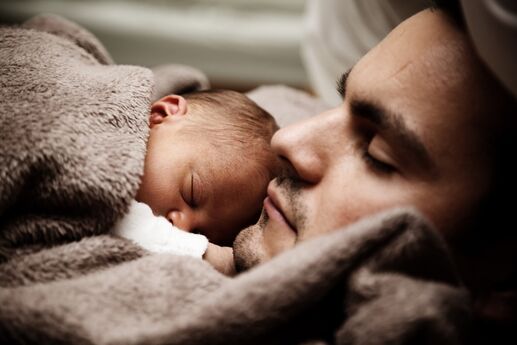Decode Your New Baby’s Sleep Movements
It’s hard to resist peering into your new baby’s crib to spy on her as she sleeps. But don’t be surprised if, instead of a peacefully slumbering infant, you see your baby twitch and flail her limbs. Try not to worry -- the jerky sleep movements are part of your baby’s regular development. Read on to take a peek into what’s going on in your baby’s sleep.
Dreamweaver
It may be tempting to assume your new baby is having a fascinating dream when you witness her sleep movements. But while babies do spend more time than adults in REM sleep, or the dream state, it’s unlikely that they are experiencing vivid dreams, as infants haven’t had many experiences and their brains are too immature.
Stretching out
Don’t forget that your new baby was accustomed to spending her time curled into a little ball in the womb. Now that’s she’s in the big, wide world, she’s learning to move her limbs and may flap and flounder about -- something that is completely normal.
New nerves
Your newborn’s central nervous system is still developing, leaving her rather out of control when it comes to her body’s movements. Once she’s older, your baby will have better command of her limbs and will be able to move them on purpose, rather than randomly twitching them.
Light sleeper
At this age, babies are very light sleepers and won’t enter many periods of deep slumber. In addition to her sleep movements and various twitches, you may notice that she grimaces, sucks, and smacks her lips, flutters her eyelids, smiles briefly, startles, and wakes up rather easily.
Time to roll
Always remember to put your new baby to sleep in her crib on her back (doing so can greatly decrease her risk of sudden infant death syndrome, or SIDS). But between four and seven months, your baby may manage to roll onto her belly in the crib, which isn’t something to be concerned about. Once babies can roll over consistently, they’ll pick the sleep position they want on their own.
Your baby’s sleep movements may seem rather strange, but they’re simply her way of learning how to control and use her body. However, if you think your baby is twitching too much or it’s making her uncomfortable and unable to relax, give your pediatrician a call. A better night’s sleep for your baby equals a better night’s sleep for everyone in your household!
Photo by Manuel Schinner on Unsplash







